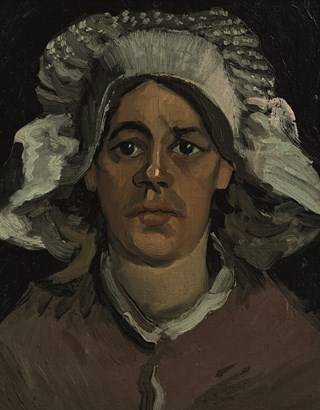
Vincent van Gogh painted Head of a Woman in March-April 1885. He was practicing painting to eventually create an intricate composition such as The Potato-Eaters. That work is considered the absolute highlight of Van Gogh's Brabant period, before he left for Paris.
Helewise Berger, curator of 19th- and 20th-century art at the museum: "Although Van Gogh painted in earth tones, there are many colors to be discovered. This makes the painting exceptional and attractive: a key piece in his oeuvre and thus in the collection of Het Noordbrabants Museum."
"This is the last chance to acquire this important heritage for Brabant before it disappears behind closed doors forever." — Jacqueline Grandjean, director of Het Noordbrabants Museum.
Gordina de Groot, better known as Sien, was a farmer's daughter from Nuenen. She is one of the five people at the table in the world-famous masterpiece The Potato-Eaters. Gordina was a model for Van Gogh often. They had a close relationship. When she turned out to be pregnant as an unmarried woman, Van Gogh was even unfairly seen as a future father. Of all the people who modeled for him, we know with certainty the name of only one: Gordina de Groot.
Its strong relationship to the masterpiece from his Brabant days makes it an important painting for the museum. Van Gogh managed to capture Gordina's expression well and intimately. Her worried look betrays the hard working-class life. Van Gogh captured Gordina effectively, in alternating broad and fine brushstrokes. Gordina therefore forms the face of Brabant peasant life and Van Gogh's Nuenen period.
To make a donation and help the museum follow this link https://www.hetnoordbrabantsmuseum.nl/en/visit/exhibitions/van-gogh-in-brabant/gordina/donate-to-gordina/
Main Image :Vincent van Gogh, Head of a Woman, 1885